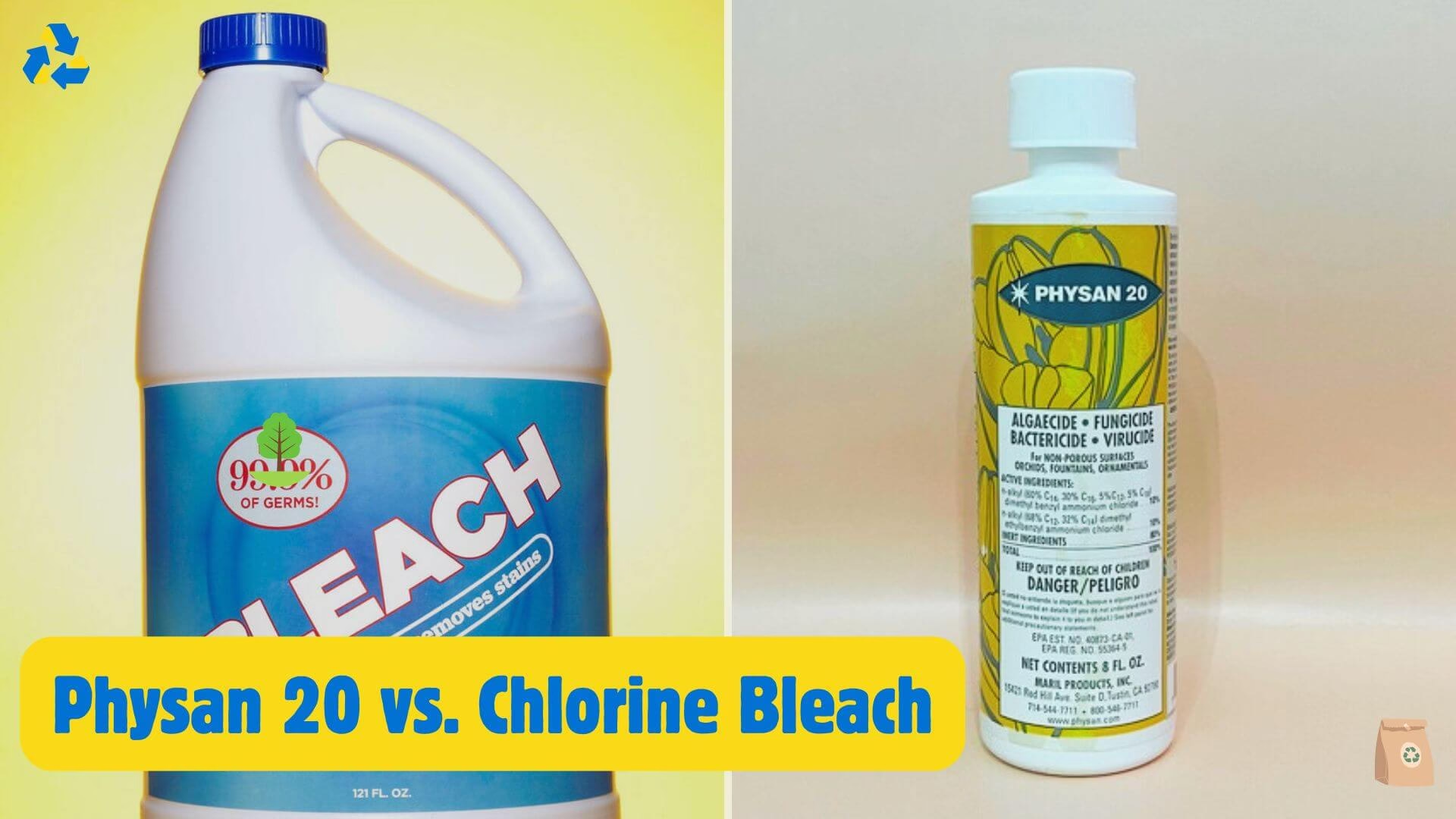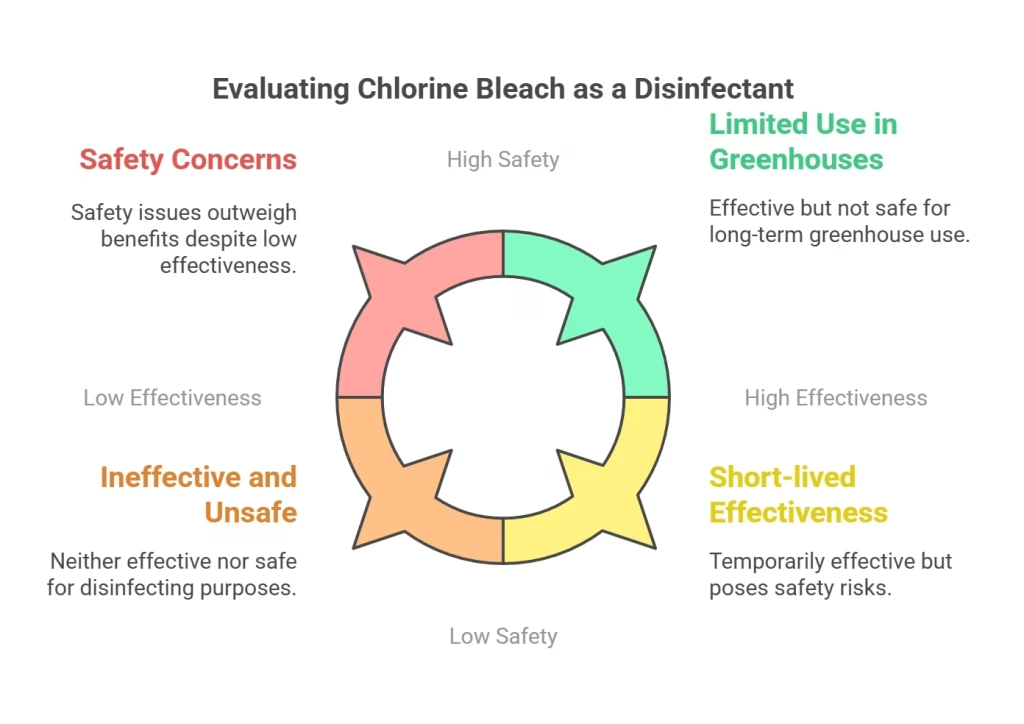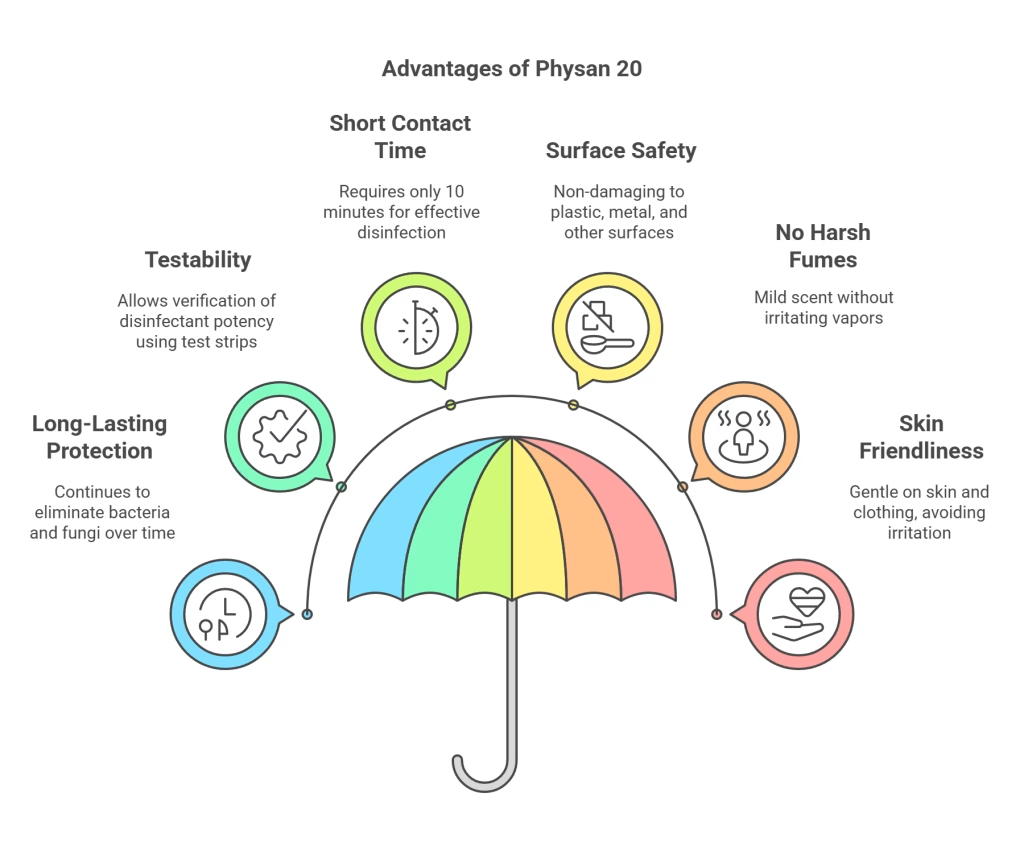Chlorine Bleach vs. Physan 20 – Which Is Safer for Plant?
Maintaining a clean greenhouse is essential to prevent fungal and bacterial-infections, so here comes Physan 20 vs Bleach ideas. Many growers assume that bleach is a cost-effective alternative to Physan 20. They also do a Physan 20 vs Bleach comparison, but this is a misconception. While bleach is widely used for sanitation, it has significant limitations in greenhouse applications.
Unlike Physan 20, bleach is not well-approved for greenhouse disinfection. It evaporates quickly, requires long contact times, and can damage equipment.
In contrast, Physan 20 offers residual germicidal activity, ensuring long-lasting protection against pathogens. This article will see Physan 20 vs Bleach in terms of effectiveness, safety, and application to determine the best choice for plant care.
Bleach as a Disinfectant
Many growers turn to chlorine or bleach for disinfecting their greenhouses, tools, and surfaces, believing it’s an affordable and effective solution. However, while bleach and chlorine do have sanitizing properties, their limitations make it a poor choice for long-term use in plant care.
From short-lived effectiveness to safety hazards, bleach may do more harm than good. Here’s why it falls short as a greenhouse disinfectant.
Effectiveness & Limitations
- Short Half-Life: A 0.5% bleach solution degrades within 2 hours, losing 50% of its disinfecting power. This means it must be used immediately after preparation for it to be effective.
- Long Contact Time: To work effectively against fungal spores, bacteria, and viruses, bleach requires a 30-minute contact time-an impractical duration for busy growers.
- Evaporation Issues: Bleach evaporates rapidly, leaving surfaces vulnerable to reinfection. Because it does not provide residual protection, repeated applications are necessary to maintain sanitation.
Safety Concerns
- Damages Surfaces: Chlorine and bleach are corrosive and can deteriorate materials like plastic seed trays, metal tools, misting nozzles, and irrigation systems. Over time, this can lead to equipment damage and costly replacements.
- Requires Ventilation: Proper airflow is required when using bleach to prevent the buildup of toxic vapors, making it unsuitable for enclosed growing spaces.
Why Physan 20 is a Better Alternative
Greenhouse sanitation is major for preventing fungal infections, bacterial diseases, and algae growth. While many growers assume bleach is the best option, Physan 20 offers a safer and more effective alternative.
Unlike bleach, it provides residual germicidal activity, requires less contact time, and is non-corrosive, making it ideal for greenhouse environments, orchid care, and tool sterilization.
Extended Effectiveness & Residual Germicidal Activity
- Long-Lasting Protection: Unlike bleach, which evaporates quickly, Physan 20 remains active on surfaces, continuing to remove bacteria and fungi long after application. This reduces the need for frequent reapplications.
- Can Be Tested for Effectiveness: Using Physan 20 Test Strips, growers can verify the disinfectant’s potency over time, ensuring consistent sanitation. Bleach, in contrast, degrades rapidly and cannot be easily tested.
- Short Contact Time: Only 10 minutes of contact time is needed for Physan 20 to fully disinfect surfaces, making it three times faster than bleach, which requires 30 minutes for proper sanitization.
Safe & Easy to Use
- Surface-Safe: Unlike bleach, which can corrode plastic, greenhouse trays, and metal tools, Physan 20 is non-damaging, preserving the longevity of gardening equipment.
- No Harsh Fumes: Chlorine and bleach produces strong, irritating vapors, requiring proper ventilation. Physan 20, on the other hand, has a mild, pleasant scent and does not pose an inhalation hazard in enclosed spaces.
Comparing Application & Cost-Effectiveness – Physan 20 vs Bleach
| Feature | Physan 20 | Bleach |
| e’P’a-Approved | ✅ Yes | ❌ No |
| Residual Activity | ✅ Long-lasting | ❌ Evaporates Quickly |
| Contact Time | ⏳ 10 minutes | ⏳ 30 minutes |
| Surface Safety | ✅ Safe on plastics & tools | ❌ Can corrode materials |
| Ventilation Needed | ❌ No | ✅ Yes – Strong fumes |
Best Practices for Disinfection with Physan 20
Using Physan 20 correctly ensures maximum effectiveness in greenhouse sanitation, orchid care, and gardening tool sterilization. Unlike bleach, which loses potency quickly, Physan 20 remains active over time. So, it is a cost-effective and reliable plant-safe disinfectant.
Follow these best practices to maximize its benefits and maintain a disease-free growing environment.
Proper Dilution & Application
- General Disinfection: Mix 1 tablespoon of Physan 20 per gallon of water to sanitize greenhouse surfaces, benches, pots, and gardening tools.
- Application Method: Spray or wipe the solution onto surfaces and offer at least 10 minutes of contact time for proper disinfection.
- Rinsing: In most cases, rinsing is not required. However, if you apply to food-related surfaces, a light rinse is recommended.
By following the correct dilution and application techniques, growers can effectively prevent fungal spores, bacteria, and algae buildup, ensuring a clean and healthy greenhouse environment.
Testing Effectiveness Over Time
- Use Physan 20 Test Strips: Unlike bleach, which degrades quickly, Physan 20’s residual germicidal activity can be tested to ensure ongoing effectiveness.
- Monitor Activity: Dip a Physan 20 Test Strip into the solution, if the test indicates reduced potency, you should prepare a fresh batch to maintain optimal disinfection.
- Long-Term Savings: Since Physan 20 remains effective longer than bleach, it reduces the need for frequent reapplications, saving both time and money.
Testing ensures that every application of Physan 20 is potent and effective, making it a trusted choice for professional and home growers.
Orchid & Plant Care Uses
- Preventing Orchid Crown Rot & Fungal Infections: Physan 20 is widely used by orchid enthusiasts to treat and prevent common diseases like crown rot, black rot, and bacterial infections.
- Seed & Plant Tray Disinfection: Use a diluted Physan 20 solution to sterilize seeds, seed-starting trays, and hydroponic misting systems, preventing early-stage fungal growth and bacterial contamination.
- Safe for Greenhouse Plants: Unlike bleach, which can damage delicate plants, Physan 20 is plant-friendly when properly diluted, making it a go-to fungicide and disinfectant for greenhouse growers.
By following these best practices, growers can maximize Physan 20’s effectiveness, prevent plant diseases, and ensure long-term sanitation.
Physan 20 vs Bleach | Which One Should You Use?
Physan 20 offers a convenient disinfectant option for greenhouse and plant care. Unlike bleach or chlorine, it provides long-lasting protection, is surface-safe, and is easier to use. Bleach, on the other hand, has a short half-life, requires long contact times, and may cause irritation due to its fumes and corrosiveness.
For growers looking for an effective, plant-safe, and long-term disinfectant, Physan 20 is a strong contender. Its ability to provide residual germicidal activity, ease of application, and overall safety make it a preferred choice for greenhouse sanitation and plant care.








